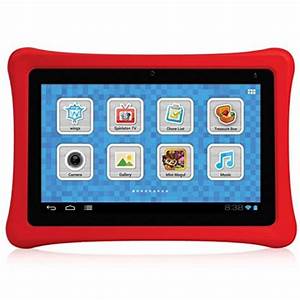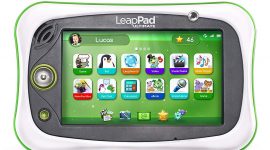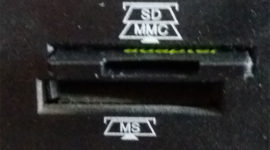Tablet Comparison: nabi 2S vs nabi DreamTab
 Both the nabi 2S and the nabi DreamTab are tablets designed for children from Fuhu, so what are the differences between the two? The first difference is that the 2S is a 7″ tablet whilst the DreamTab is an 8″ tablet.
Both the nabi 2S and the nabi DreamTab are tablets designed for children from Fuhu, so what are the differences between the two? The first difference is that the 2S is a 7″ tablet whilst the DreamTab is an 8″ tablet.
Both tablets have capacitive multi-touch screens; however, because the DreamTab is a larger tablet, it has a larger screen. It also has better resolution than the 2S; 1920 x 1200 pixels for the DreamTab compared to 1280 x 800 for the 2S.
Both also come with 16 gigabytes (GB) of internal memory, and both have micro SD card slots, allowing memory cards of up to 32GB to be used with them.
The nabi 2S has a quad core processor with a fifth battery saver core; the DreamTab has a Bay Trail-T Atom – a more advanced processor.
The RAM of the nabi 2S is 1 megabyte (MB); that of the nabi DreamTab is 2MB.
The 2S has a single, front-facing 2.0 megapixel (MP) camera, whilst the DreamTab has two cameras, one front-facing and the other rear. The front-facing camera on the DreamTab is identical, but the rear facing tablet has 5MP resolution, and comes with a flash.
The battery for the DreamTab is also slightly better.
The 2S runs Android 4.2 Jelly Bean whilst the DreamTab runs the more recent 4.4 KitKat.
Each tablet has Bluetooth and WiFi; the DreamTab also has GPS.
Both tablets have the same ports – a 3.5 mm headphone jack, a micro SD card port, and a nabi Connector – but the DreamTab also comes with a nabi Dream Pen.
The nabi DreamTab is larger, more powerful, has more features and has better resolution than the nabi 2S. As a consequence of this, it is also a more expensive tablet to buy. Due to this, the DreamTab is less ideal for younger children, both because of the expense, and because of the size – 8″ is a bit too large for young children. The DreamTab is therefore more suited to older children than to younger ones.
>> Fire 7 Kids Edition
>> Fire 8 Kids Edition
>> Dragon Touch K8 Kids
>> Tagital T7K
>> LeapFrog Epic Academy Edition
>> Samsung Galaxy Tab E Lite Kid
>> Kids BTC UK 7" Quad Core Tablet PC

